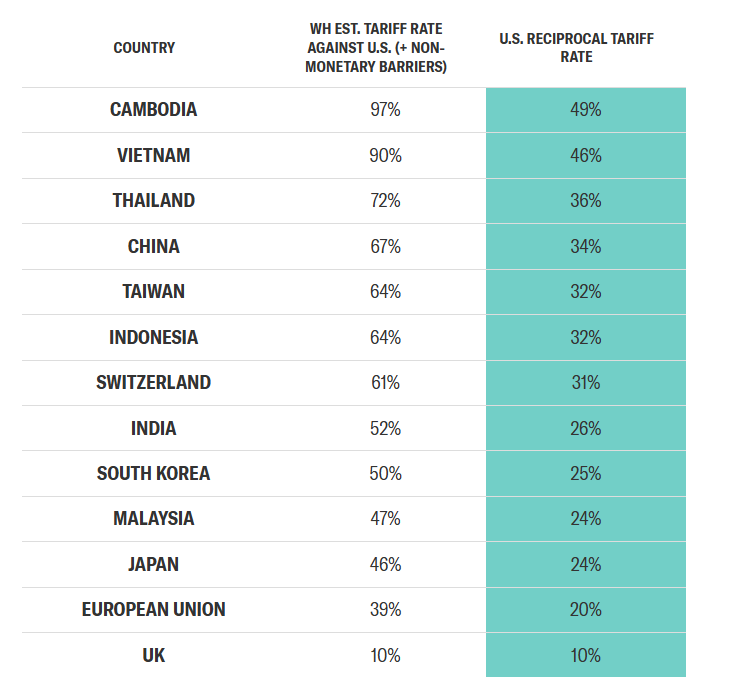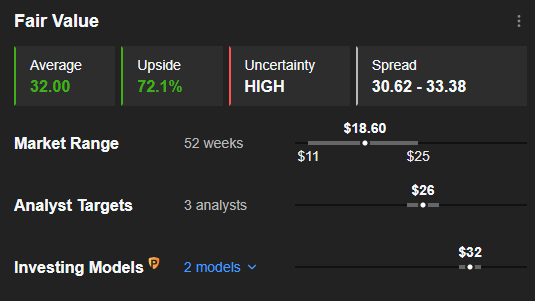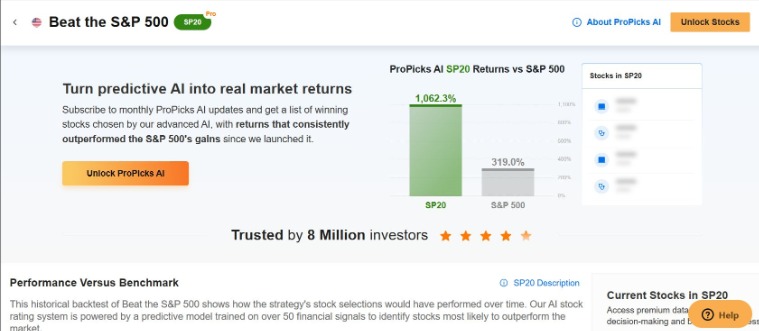- Trump’s “Liberation Day” tariffs are here—so why did markets flinch?
- With recession fears simmering and trade tensions rising, investors aren’t buying the optimism just yet.
- But could names like Century Aluminum quietly emerge as tariff-era winners?
- Looking for more actionable trade ideas to navigate the current market volatility? Subscribe here to unlock access to ProPicks AI winners.
Yesterday afternoon, Donald Trump began his speech detailing U.S. tariff policy, in what has been dubbed "Liberation Day." The broad range of tariffs presented were described by the current president as “soft reciprocal tariffs” and largely confirmed previous announcements made in recent weeks.
Equity markets traded lower in after-hours trading, with the S&P 500 dropping more than 2%, indicating that investors had hoped for a more dovish tone from the conference. Currency markets, after a brief spike in volatility, returned to baseline levels. In particular, the EUR/USD pair resumed its downward trend, reflecting continued weakening of the U.S. dollar due to growing recession fears. Trading in the coming sessions this week should help shape short-term sentiment across both currency and equity markets.
A Turning Point or the Start of a Long Negotiation?
Donald Trump presented a clear chart summarizing the tariffs imposed on various countries: Source: Yahoo Finance
Source: Yahoo Finance
The United States is now approaching its highest effective tariff level in 100 years—just under 30%. According to the current administration, this move is part of an effort to return the U.S. to the high-growth era of the late 19th and early 20th centuries. Whether these measures will achieve that goal remains to be seen over the next few quarters and will no doubt be the subject of detailed economic analysis.
All signs suggest this is not the final chapter in the tariff war. Instead, current rates may serve as a baseline for future negotiations with individual countries or trading blocs. In the coming weeks, markets will closely watch for foreign reactions, the likelihood of reciprocal tariffs, and the anticipated impact on corporate margins—especially as similar tariffs during Trump’s first term notably strained U.S. companies’ bottom lines, particularly in the case of tariffs on China.
In addition to the many sectors likely to be negatively impacted, there are also industries that may benefit from these sweeping changes. Domestic steelmakers and aluminum producers, for example, may see increased demand due to reduced foreign competition. The semiconductor industry is also undergoing a strategic shift, as the U.S. pushes for supply chain independence—attracting investment and production to the U.S. and allied nations. This could provide a long-term boost to major players in the field.
Will Century Aluminum Company Benefit From the Tariff War?
One company that could benefit significantly from the new tariffs is Century Aluminum Company (NASDAQ:CENX)—the largest U.S. producer of primary aluminum. Last month, 25% tariffs on steel and aluminum were enacted as part of the initial effort to support domestic producers.
According to InvestingPro’s fair value analysis, Century Aluminum has as much as 72.1% growth potential. Source: InvestingPro
Source: InvestingPro
However, it may take until the Q2 2025 earnings results to see the first tangible impact of these new tariffs reflected in the company’s financials.
***
Be sure to check out InvestingPro to stay in sync with the market trend and what it means for your trading. Whether you’re a novice investor or a seasoned trader, leveraging InvestingPro can unlock a world of investment opportunities while minimizing risks amid the challenging market backdrop.
Subscribe now and instantly unlock access to several market-beating features, including:
- ProPicks AI: AI-selected stock winners with proven track record.
- InvestingPro Fair Value: Instantly find out if a stock is underpriced or overvalued.
- Advanced Stock Screener: Search for the best stocks based on hundreds of selected filters, and criteria.
- Top Ideas: See what stocks billionaire investors such as Warren Buffett, Michael Burry, and George Soros are buying.

Disclaimer: This article is written for informational purposes only. It is not intended to encourage the purchase of assets in any way, nor does it constitute a solicitation, offer, recommendation or suggestion to invest. I would like to remind you that all assets are evaluated from multiple perspectives and are highly risky, so any investment decision and the associated risk belongs to the investor. We also do not provide any investment advisory services.
